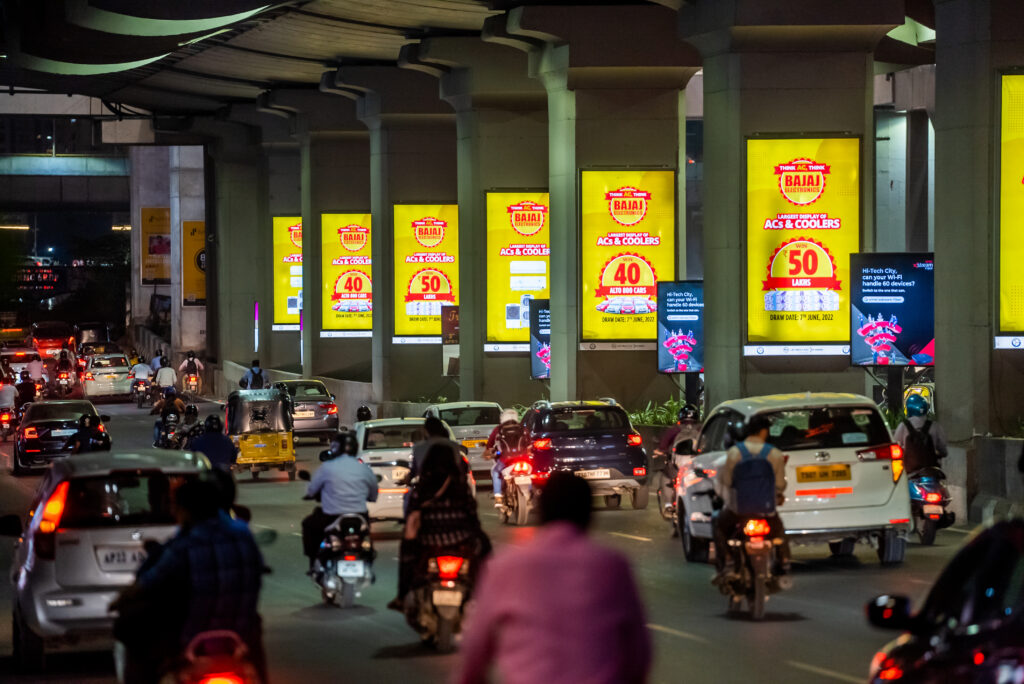Billboard Advertising Campaign Planning
Not all advertising campaigns are alike. Nor should they be, as each company putting together an advertising campaign is trying to accomplish something unique to its own set of marketing goals and strategies. There are a variety of billboard marketing strategies available that will enable you to achieve your advertising goals.
The key to an effective billboard advertising design is executing a campaign designed around your specific, desired results.
Our sales reps can help by identifying your campaign goals from the start and provide research and strategies to target and effectively reach more of your potential customers. Contact us to start planning your advertising campaign.

Ready to get started?
WE ARE, TOO! CONTACT US TODAY TO LEARN MORE ABOUT OUTDOOR ADVERTISING AND HOW LEADSPACE OUTDOOR ADVERTISING CAN HELP YOUR BUSINESS OR PARTNER WITH YOUR AGENCY!
Determine Your Campaign Objectives
Before you begin the creative process, it’s a good idea to nail down what you want to achieve. Here are some possible start-off points:
Are you opening a new store location or launching a start-up site? Think about how your new business or site fills a need for your future customers, and what separates you from the rest of the marketplace.
Are you trying to gain a larger awareness in the marketplace? Driving consumers through your doors or to your site is much easier when your target consumers know who you are. Consider what your brand stands for, and what you want it to mean to your customers.
Do you have an upcoming sale or promotion? You’ll need to look into quick and to-the-point ad messages that can reach many potential customers as quickly as possible. Think about what makes your sales or special event most attractive to your target audience.
Promotions
Timing is everything. Consider when your sale or promotion will launch, and think about what else is happening during that time. For instance, if you’re running during September, you’ll be hitting back to school, Fall fashion, home improvement and football season in terms of promotional timing. Will your message be competing for attention during this season, or does it compliment what’s happening at that time?
Tell them about it. What’s the most compelling thing you can say about your sale or promotion? Define this sale opportunity, and why your customers wouldn’t want to miss it. This becomes the backbone of your advertising message.
Make word of mouth as easy as possible. Once you’ve reached a few potential customers about your promotion, make sure they have a way to spread the word for you. Make sure your advertising includes your social media accounts like Twitter or Facebook to also let your customers know how to interact with you later.
Branding
If you want to make a name for yourself, advertising can deliver name and brand recognition. A branding campaign is a long-term, continuous presence in the marketplace. The singular goal of this type of campaign is to generate high consumer awareness. The result being that consumers think of you, and only you when making purchasing decisions. This type of focused advertising continuity builds familiarity, and familiarity builds trust in your business, product and/or service.
Simple, focused brand advertising is the key to getting your customers to remember your company first when in need of your product or service. You want to get noticed for what you do and who you are.
First, what is the one most important thing you want your customers to think about when they think of your company or product? Consider what makes you unique in the marketplace or what you deliver better to your customers than the competition. Then, take a healthy, critical look at your brand. Visually, does your logo do a good job of representing your company? Next, make sure your branding message also evokes that thought or feeling effectively.
A strong branding campaign will effectively increase top of mind awareness for your business, product, or service. Once you’re sure this is being accomplished, it’s time to ask consumers for their business with more specific call-to-action campaigns.
Call to Action
A call to action is an effective campaign technique for engaging a viewer. Typically, this includes buying a product, visiting a web address, downloading an app, etc. As technology evolves, so will call-to-action messages. Technology such as digital billboards with live tweets or QR codes on buses engages the public and gets them involved in your campaign.
Call to action advertising generates great results because it appeals to our human tendency to learn by doing. When consumers feel the desire to take an action, they’re actively learning about your company, brand, or product. This basic marketing concept is grounded in Adult-Learning Theory, which tells us that people retain more information for a longer amount of time when we’re actively doing something with that information. In this instance, that information is you: your product, service, sale or event.
A call-to-action campaign can run short term (days, weeks or a few months), and can be successful quickly as long as your media mix can reach a high percentage of your target audience in that short time frame. This media mix should be able to quickly execute time sensitive campaigns, new products or seasonal specials that consumers should take advantage of within a set period of time. The benefit of this campaign is that you are able to capture the consumers’ attention and have them act upon a particular promotion immediately.
Don’t overlook how social media gives you new and easy ways to advertise a call to action. Tying your Twitter or Facebook account into your campaign, your ad could be asking customers to simply “share” or “like”, to engage in your promotion or retail opportunity.
Remember, consumers are less likely to respond to a call-to-action campaign if they are unfamiliar with who you are and what you offer.




